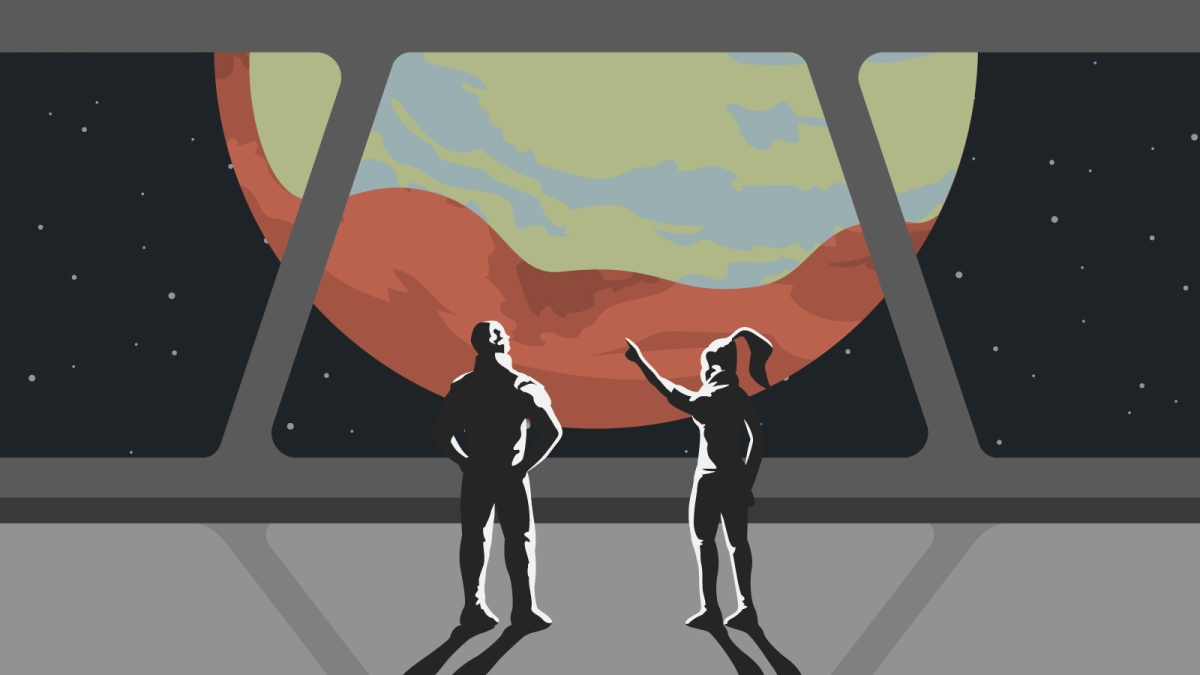Terraforming is a science fiction staple, from "Dune" to "Star Wars" to hundreds of other stories.
Take an inhospitable planet and make it suitable for life as we know it. But is that possible to do with Mars?
That was the subject of a July 22 panel discussion hosted by the Interplanetary Initiative featuring Arizona State University planetary scientist Jim Bell, who has roles on seven NASA missions either in flight or in development, and former American astronaut Jeffrey Hoffman, currently a professor of aeronautics and astronautics at MIT.
Hoffman is the deputy principal investigator for MOXIE, an experiment on the Mars 2020 Perseverance rover designed to demonstrate a way that future explorers might produce oxygen from the Martian atmosphere for propellant and for breathing.
“So far, so good,” Hoffman commented on the successful experiment.
But don’t pack your bags just yet.
“Could we transform Mars from the cold dry desert it is today into a more Earth-like, capable of supporting terrestrial-type life?” Hoffman said.
Mars used to have liquid water. There are even indications of a shoreline.
Bell’s job is assessing the current conditions via orbiters and rovers.
“Changing the environment of any planet is going to start with a survey of what’s there,” he said. “What are the raw products available to potentially make a change using resources in place, so-called in situ resources? … A lot of what we’re doing is just characterizing the environment.”
Looking at pictures, it doesn’t look that bad, certainly nothing a four-wheel drive with a good lift and tires couldn’t handle.
“The reality is incredibly harsh,” Bell said.
There is no breathable oxygen. It’s bitterly cold (between minus 125 F and 23 F). Radiation bombards the surface. Martian dust — described by Bell as “like smoke” — will get into everything and stay there.
“Getting this place that is not like the Earth to be like the Earth is going to be a very heavy lift,” Bell said.
Some of the heavy lifts: surviving the radiation. Getting resources. (Yes, there is ice at the poles, but you’re going to need to mine it to get to it.) And systems reliability.
“If something breaks, you are on your own,” said Hoffman, who has been on five space flights and logged more than 1,200 hours and 21.5 million miles in space.
The biggest barriers are “pretty enormous,” Bell said.
One of them is that Mars has low gravity. You can work out all you want, but eventually people living there will evolve. Martians will be different from us.
The dust is full of perchlorates. In short, they’re a chemical that’s bad for humans. Levels of it on Mars would be toxic. Citing the movie "The Martian," Hoffman said, “I wonder what Mark Watney’s liver looked like after a year and a half of living off the land.”
“They’re there and they’re bad,” Bell said. “There’s no end to the harshness.”
If we crack a host of wicked problems to get there and survive there — and there are a lot of wicked problems to be solved to do that — we’ll need to focus on creating Earth-like habitats to live in.
“When we talk about terraforming, it’s long term,” Bell said. “Thousands of years — if ever.”
One thing we are proving to be skilled at — flooding the atmosphere with carbon — isn’t a viable option on Mars because there isn’t enough carbon dioxide on the planet to make the atmosphere like Earth’s.
“The technology isn’t there,” Bell said.
Finally, one of science’s oldest questions arose: Even if we could, should we?
Not if there’s life there, both scientists agreed. But if it’s barren?
“Almost all of the universe is hostile to life,” Hoffman said. “There’s an ethical good to spread life to another planet.”
“But if there’s another form of life on Mars, it’s incredibly important we preserve it,” he added.
The discussion was part of the monthly "Why We Go" series examining interplanetary exploration through conversations with diverse experts optimistically answering the question, why do humans go to space? "Why We Go" is a collaboration between the Translational Research Institute for Space Health at Baylor College of Medicine and the Interplanetary Initiative at Arizona State University.
Top image: Illustration by Alex Cabrera.
More Science and technology

Hack like you 'meme' it
What do pepperoni pizza, cat memes and an online dojo have in common?It turns out, these are all essential elements of a great cybersecurity hacking competition.And experts at Arizona State…

ASU professor breeds new tomato variety, the 'Desert Dew'
In an era defined by climate volatility and resource scarcity, researchers are developing crops that can survive — and thrive — under pressure.One such innovation is the newly released tomato variety…

Science meets play: ASU researcher makes developmental science hands-on for families
On a Friday morning at the Edna Vihel Arts Center in Tempe, toddlers dip paint brushes into bright colors, decorating paper fish. Nearby, children chase bubbles and move to music, while…


